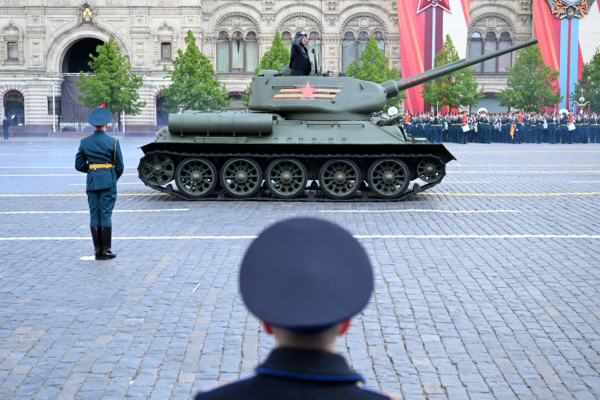On May 9th, the annual military parade was held in Red Square in Moscow. Before the leader of the Chinese Communist Party appeared, he repeatedly referred to the “fighting side by side” between China and Russia 80 years ago, which seemed puzzling. In the final stage of World War II, a week before Japan surrendered, Soviet troops occupied Northeast China, followed by the Chinese Communist Party troops, but there was no opportunity for them to “fight side by side” against Japan. This raises a historical fact that a large number of Soviet advisers and tens of thousands of Japanese soldiers joined the Chinese Communist Party army to help them in the civil war.
In 1956, during a meeting with a Japanese delegation, Chinese Premier Zhou Enlai expressed gratitude to some Japanese who participated in the liberation war as doctors, nurses, and technicians.
According to the Chinese official statement, during the civil war in the Northeast, more than 30,000 Japanese served the Chinese Communist Party, primarily in military-industrial enterprises, medical systems, railway transport, and aviation training. The Japanese, who were skilled technicians, played a crucial role as the soldiers of the Chinese Communist Party were mostly illiterate and lacked technical expertise, with estimates suggesting that up to around 20,000 Japanese were involved.
The Chinese Communists also acknowledge that the medical system of the Fourth Field Army was initially supported by Japanese medical personnel. At that time, the medical level of the Chinese Communist Party army was very low, with only a few like Norman Bethune, and surgeons had to perform more than a dozen major surgeries a day, resulting in accidental infections and deaths. According to Chinese official sources, the Fourth Field Army’s health department alone had at least 7,200 Japanese soldiers, with many of them serving until the end of the Korean War.
The Chinese Communist Party also admitted that the training squadron of the Japanese Kwantung Army aviation team was also incorporated into the Fourth Field Army. At that time, there were at least 20 pilots, 24 mechanics, 72 technicians, and nearly 200 ground support personnel. Based on this, the Chinese Communists established the Northeast Aviation School, trained a group of pilots including Wang Hai, who participated in the Korean War in 1950, and later became a commander in the Chinese Communist Party air force. The first squadron of the J-20 fighter jet in the Chinese Communist Party was also known as the Wang Hai Squadron and stationed in the Northeast.
However, the Chinese Communist Party concealed the Japanese soldiers in the front-line units. At that time, the Chinese Communists forcibly enlisted some of the Japanese Kwantung Army, leaving behind experienced Japanese veterans who fought for the Chinese Communist Party. But many Japanese soldiers were unwilling and even engaged in conflicts with the Chinese Communist forces.
On September 28, 1948, the Japanese Ministry of Foreign Affairs announced that a total of 140,000 former Japanese Kwantung Army officers and soldiers, along with their families, were forced to remain in the Chinese Communist forces in Northeast China, where they taught them how to fire cannons, guns, fly planes, and provide tactical guidance, even driving tanks and directly engaging with the Nationalist Army, ultimately helping the Chinese Communist Party win the civil war.
After returning to Japan, these Japanese soldiers formed a “Fourth Field Association,” with over ten thousand members participating in activities each year. Some revealed that over 100,000 Japanese soldiers had served in the Fourth Field, with one Japanese infantry class for each Chinese Communist Company. Their well-trained expertise significantly boosted the overall combat capability of the Fourth Field. They proudly claim that they defeated the Nationalist Army in the end, all thanks to their collaboration with the Chinese Communist forces.
On July 28, 2010, Li Jina…

